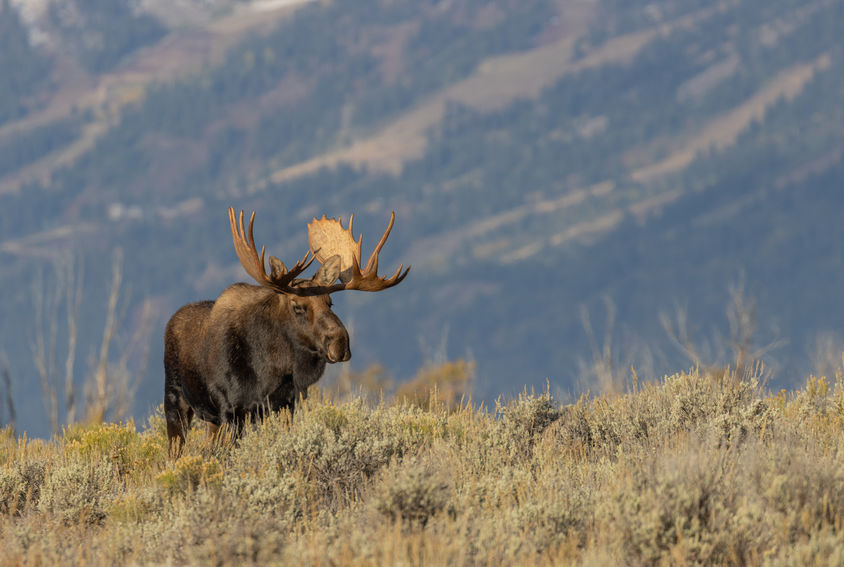
Success in hunting is often determined by how well a hunter knows their prey. The more familiar you are with the behaviors and habits of the animal you’re hunting, the easier it will be to find, pursue, and hopefully bag one. If moose is your game of choice, then many of the behaviors you need to know about have to do with the rutting season.
Every fall begins the rutting, or mating, season for moose. Rutting behaviors typically begin in late August or early September and continue until early to mid-October. Knowing what happens during the rut can offer an advantage to hunters out in the field during the season. Check out some facts about moose rutting below that can help you take a bull!
1) As the season begins, bull moose will start moving to find cows.
Normally, bull moose tend to stay in thick, cool forest areas at higher elevations. Cows, on the other hand, typically stick to the lowlands in areas near water. The water offers food and a means to escape from predators, so cows take their vulnerable calves here for safety.
During mating season, however, bulls will move toward lower elevations to find cows. If you’re hunting during the early weeks of the rut, this means you should start your search near lowland bodies of water.
2) Bull moose will mark their scent in the areas they roam.
Scent marking is a way for bulls to claim their territory, assert dominance over competition, and attract cows in heat. Hunters should look for signs of scent marking and focus their efforts in these ranges, as bulls will return here frequently to see if their markings have attracted any cows. The biggest markers to look for are indications of thrashing and wallows.
As bulls start moving in search of a mate, they beat (thrash) against shrubbery and other vegetation with their antlers to alert both other bulls and cows to their dominant presence. They will also create wallows, or rut pits, in areas they roam during the rut. A bull will scrape the ground to dig a shallow pit, urinate in it, and then lay down in it to cover himself in his own scent to strengthen his appeal to cows.
3) Sparring allows bulls to assess their strength.
Bull moose become more aggressive during the rut, frequently engaging in sparring and fighting. During a fight, two bull moose try to intimidate and scare off one another in a competition for cows. Fights are intense, quick, and result in injury more often than sparring. Sparring is different than fighting, as the intention is more for a bull to test their abilities and prove their dominance than vie for a cow. Think of it as a challenge to assign rank in an area.
A hunter can imitate the sound of two sparring bulls to attract other bulls in the vicinity. They are more likely to want to join in a sparring match, where they have an opportunity to assert their own dominance, than in a fight. To mimic sparring sounds, push and rub two smaller antlers (that are easy to carry during a hunt) together.
4) Cows call for bulls when they go into heat.
Cows vocalize to communicate with one another regularly. During the mating season, these calls become much louder and longer. It is typically a nasally sound that begins and ends with a high pitch. The call of a cow in heat can last anywhere from 5 seconds up to 30.
Just like with sparring sounds, a hunter can use a cow call to attract bull moose in rutting season. You can use your own voice or buy a moose horn or trumpet to produce the sound. The calling technique requires patience, as a bull can be further away from you or approaching slowly, checking for other bulls in the area before they show themselves.
At Lawrence Bay Lodge, our moose hunting guides know their game and our Saskatchewan hunting lands like the back of their hand. When you venture out with us, we’ll do everything in our power to ensure you go home with a prize.
Come check out our outstanding hunting opportunities for yourself and contact us to book your guided trip today!

